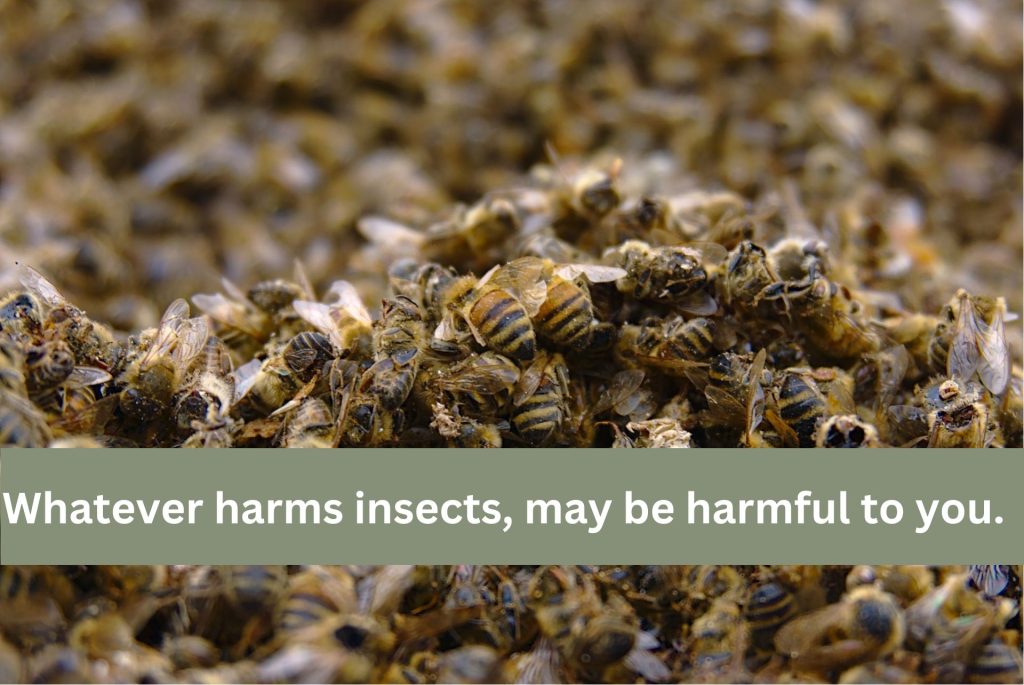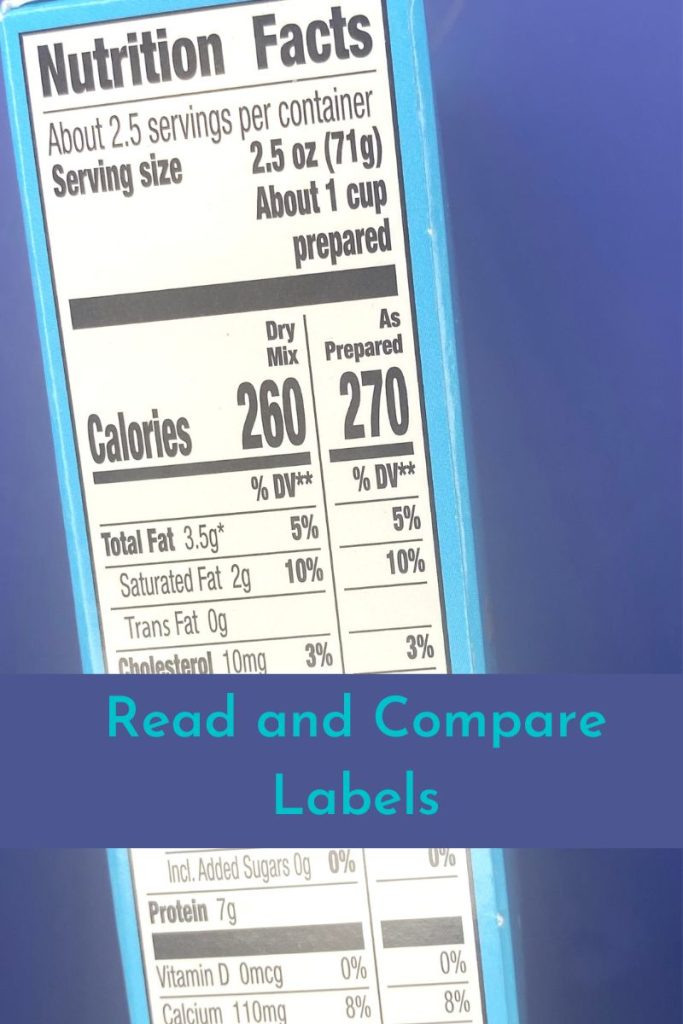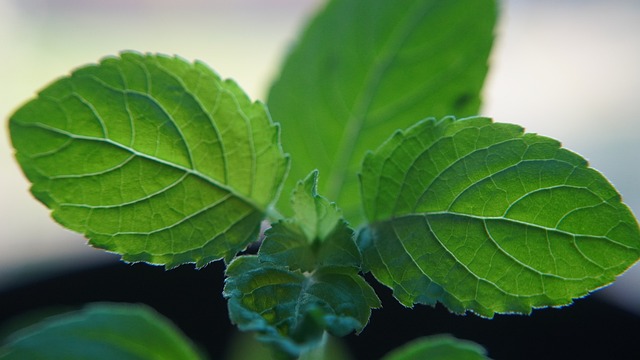Don’t Nourish With Toxins
This post may contain affiliate links. View our disclosure policy here.
I want to offer a lot of basic nutritional information here on the blog. My goal is to help those that want to add nourishment, rest, movement, mind health and simplicity to their lives. But without pushing you for perfection or giant leaps. In talking about nourishment and wellness though, it’s important to not only approach what’s truly nourishing, but to be sure we don’t “nourish” with toxins.
While you are on your journey, filling your wellness basket with lots of great tools like vegetables, herbs, prayer books, inspirational books, time for quiet, shoes for your daily walks, and more, don’t forget there’s some things to ‘take OUT of your basket’ too. While you are reaching for fruits, vegetables, cleansing products and other packaged items, think about what’s in those packages besides nutrients. Don’t nourish with toxins.
What Are Toxins?
Toxins are any substances that can cause harm or injury to a living organism and that means humans. They can come in many forms, including chemicals, heavy metals, and microorganisms. They can be naturally occurring, such as in certain plants and animals, or they can be man-made, such as pollutants and pesticides. Some substances can be considered beneficial in small amounts but toxic in larger amounts.
Toxins can enter the body through various routes including the mouth and nose followed by the the lungs and the digestive tract, as well as through the skin. They can have a wide range of effects on the body, from minor skin irritation, fatigue, and headaches to more serious health problems such as cancer, organ damage, and even death. Some toxins can accumulate in the body over time, leading to long-term health effects, especially if exposure is chronic.
What Are The Most Common Toxins In Food?
There are many toxins, unfortunately, found in our food supply – both in processed and unprocessed food items. Let’s do a quick scan of what the most common toxins are. Then we’ll discuss how to approach the topic of ‘don’t nourish with toxins’ in a baby step sort of approach that will be manageable but not overwhelming!
The most common toxins found in our foods include the following:
Don’t nourish with toxins. There are many toxins that can be found in food, some of the most common include:

Pesticides
Many fruits and vegetables that are otherwise healthy, are sprayed with pesticides to protect them from pests and diseases. As pesticides are harmful to pests, they are also harmful to the one consuming the plant, especially in large quantities or over time when consuming often.
Heavy Metals
Certain types of fish and seafood can contain small to sometimes large amounts of heavy metals such as mercury, lead and cadmium due to contamination of the waters they live in.
BPA (Bisphenol A)
The industrial chemical, BPA, can be found in the lining of many canned foods and plastic containers. BPA can disrupt hormones and has been linked to various health conditions such as cancer, obesity and diabetes.
Nitrates and nitrites
Commonly used as preservatives in processed meats such as bacon and hot dogs, nitrates and nitrates have been linked to an increased risk of inflammation, cancer, birth defects, headaches, and other problems. The amounts of nitrates and nitrites naturally found in some vegetables does not pose this same risk.
Artificial Sweeteners
The artificial sweeteners that some use to replace sugar such as aspartame, saccharin, and sucralose have been linked to various health problems such as headaches and migraines, weight-gain, cancer and other health concerns.
Trans fats
Many processed foods contain an unhealhty type of fat called trans fats. They are formed through a process known as hydrogenation. Trans fats have been linked to a number of health issues, including heart disease and stroke. This is why it is important to limit your intake of trans fats and choose healthier alternatives whenever possible.
Artificial Colors and Flavors
Artificial colors and flavors are chemical compounds that are used to enhance the appearance and taste of food products. Some studies have suggested that certain artificial colors and flavors may be toxic and may have negative effects on health. For example, some artificial colors have been linked to headaches, worsening of asthmatic symptoms, digestive problems, and hyperactivity in children. Some artificial colors and flavors have been linked to allergic reactions in sensitive individuals. Additionally, some studies have also shown that certain artificial colors may be carcinogenic. More research is needed to fully understand the potential health effects of these compounds.
Additional Toxins To Be Aware of:
The biggest reason to stay aware is the more toxins you consume, the bigger the build up. So while eating some of these things occasionally MIGHT not cause an issue for you, a slow build up does have potential to cause issues in the future.
The list above is certainly limited as there’s really quite an abundance of potential toxins found in food. Others include high fructose corn syrup, MSG (monosodium glutamate – which has a ton of names used by the food industry), BHA, BHT, Carrageenan, Caramel Color, TBHQ, sulfites, and more. That’s a lot of things that have potential toxicity and yet there’s others. It’s challenging to eliminate them all. Believe me, I know- we (my immediate family) has eliminated the majority of these ingredients entirely from our diet for the past 15 years. And while I’d love if you could find a way to dump them all out of your life too, I don’t expect you to do it overnight. Let’s talk baby steps!
How Do I Eliminate Toxins?
Step One:
The first step is awareness. After you read this article, check out some other sources on some of these toxins I’ve mentioned. Do some searches, read some books and articles on the ones that spark your interest. Become aware. Here’s a few resources to get you started.
MSG.org is a great source on what MSG does and the various ways it is hidden in our food.
Foodal.com has a great article on artificial food colors.
The Mayo Clinic has a few articles on Trans-fats.
Is This Your Child is a book by a physician which is what actually started my family on the path of cutting out everything artificial.
The Unhealthy Truth is an informative book I just got for Christmas by a mother who has investigated the dangers of America’s food supply after her young daughter demonstrated a severe food allergy. I’ve just started reading it. It’s pretty eye opening so far.

Step Two:
The second step is label reading. Read the labels of the foods you are purchasing. Stay aware of what is in each package. Ask yourself if there’s a different brand or selection that you could buy with less toxic ingredients? For example, I’ll occasionally buy Doritos for my son (and myself), but I definitely would never buy the original loaded with all sorts of colors, artificial flavors and MSG. The organic style do not. Read the labels. You may be suprised.
Step Three:
The third step, once you learn more about the toxic ingredients, is to learn which one might be easier for you, yourself, to say no to or greatly limit. Maybe the easiest thing for you to do is switch to non-hydrogenated fats at home, using healthier fats such as coconut oil, avocado oil and grass-fed butter. Maybe you may decide to just eliminate artificial sweeteners and just use limited amounts of sugar, maple syrup and honey instead. The choice needs to be your own. Pick just one thing. Keep at it until it’s truly a habit.
Step Four:
The fourth step is the next right thing. Once you have eliminated or at least highly limited one toxin, choose the next toxin to attempt eliminating. Don’t try to overwhelm yourself with giving up too many things at once or adding too many things at once. If that’s your style and you want to eliminate it all- you CAN. It’s doable but tough. Really tough. Don’t let yourself be so overwhelmed that you give up! We want success. We want progress- even imperfect progress.
It is important to be aware of the potential health effects of these compounds, as they can have both positive and negative impacts on our bodies. Therefore, it’s best to consult with a doctor or a nutritionist to determine if these ingredients are a concern for you. Also, some of these ingredients may be a concern for some people with certain health condition, allergies, or dietary restrictions.
What do you think of toxins in our food supply? Are there some you have already eliminated? What’s the next toxin on your list to take out of your cupboard so you don’t nourish with toxins?








Love this information!
I’m glad to help! Thanks for stopping by again!
Really great to know, we should all pay attention to this!
Indeed- hope you pick one to start with very soon! Thanks for stopping by.
Such a helpful article on eliminating toxins in our diet. Thanks for the information and step by step instructions!
I hope you pick one to start with soon! Thanks so much for stopping by!
Wow, Great Information! Thank you for posting!
So glad you stopped by. Hope you pick one or two to start eliminating soon!
Great article! We’ve eliminated artificial colors, flavors, and preservatives. We keep vigilant for bioengineered foods but sometimes sneak up on us in our cupboards. My 6yr old twin girls ask me constantly, “Does this have colors?” The answer is almost always “yes”. It’s so sad that much of the snacks and food on the market have artificial ingredients and are targeted towards children.
I’m so glad you are looking out for these things for you and your family! My kids, over 15 years ago when we started, became the best label readers! It is sad, I totally agree. There are such better options but the food industry seems to want the cheaper way to go which is, of course you know, the poorest choices for optimal health.